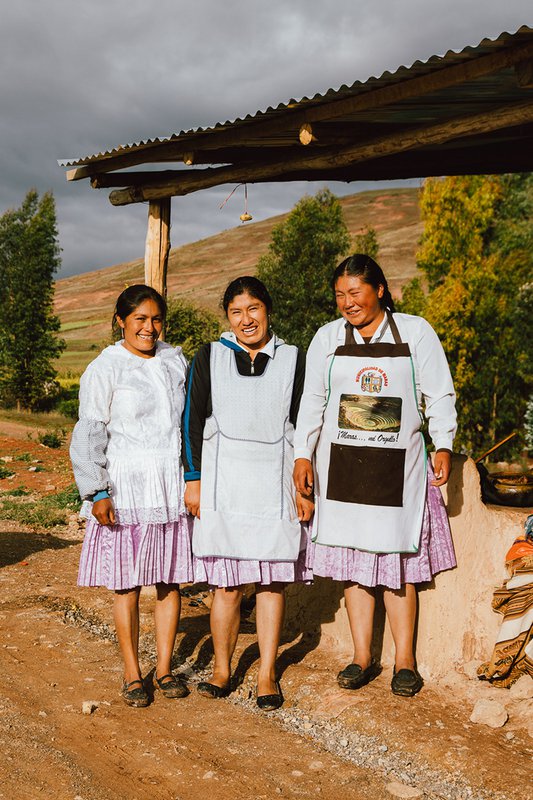A Travel Photographer Navigates the Sacred Valley of the Incas
 A morning hike at Inkaterra Hacienda Urubamba. All photos by Tanveer Badal.
A morning hike at Inkaterra Hacienda Urubamba. All photos by Tanveer Badal.
Peru's truly magical landscape, as seen through the lens of travel photographer Tanveer Badal.
SACRED VALLEY, Peru - Before arriving in Peru I didn’t know much about the Sacred Valley of the Incas. Of course, I had heard of — and daydreamed about — visiting places like Machu Picchu, the Peruvian Amazon, Cusco, and Lima, but the Sacred Valley was a vague and mysterious place on the map for me. As we drove from Cusco Airport to my hotel, Inkaterra Hacienda Urubamba in the heart of the Sacred Valley, I found myself watching the magical landscape unfold with my nose pressed to the window.
Our vehicle wove through the high altitude range, often climbing as high as 13,000 feet, making sharp hairpin turns. Coming off a series of flights from sea-level Los Angeles, I kept chugging bottles of water in the back seat, willing myself not to get sick from the altitude. We took short breaks at overlooks to snap photographs; I was winded just walking back to the car.


For the whole ride, we were surrounded on all sides by towering mountains. I’d later learn that they were only the foothills of the great Andean range. The Andes were even more impressive looming in the distance, often covered in clouds. Occasionally, the clouds would part and we’d get a peek at their gray surfaces capped with snow.
It was springtime, so there were purple and yellow wildflowers everywhere. A fresh rain had just fallen, which made the grass appear neon green. From an overlook, I watched the Urubamba River as it flowed through the valley with the remains of ancient Inca ruins and farming terraces scattered about. I wanted to ask the driver to stop for photographs every few minutes, but had to hold back as I knew this was just the start of my Peruvian adventures, and I had many days left to go.
“Why is this area called the Sacred Valley anyway?” I asked my chaperone from Inkaterra. He explained it was because the area contained some of the best land for farming, in particular maize farming, which the Incas used as their primary source of food and for chicha, a fermented maize drink consumed in large quantities at ceremonial feasts and religious festivals.
Moments later, we saw a wooden sign off the side of the road advertising the very same chicha-de-jora (traditional Andean corn beer). We stopped at the roadside stall for a taste. The only other customers were a pair of farmers feasting on cuy (guinea pig), served head to tail on a stick. A cheap boombox played crackly Andean tunes. The chicha was pink and a little sweet. I expected it to taste strong and alcoholic but it was actually mellow and very easy to drink. The three sisters that operated the food stall wore matching dresses and aprons and kept giggling as I sampled random delicacies like chicharon (fried pork rinds) and snapped photographs.



Halfway to the hotel, we stopped at Chinchero, a picturesque village 3,762 meters high in the Sacred Valley of the Incas. As we climbed a series of steps to get to the village, I was definitely starting to feel the altitude. My mind was already at the top of the hill but my body was still way down below. The view was beautiful. We stopped at a market and watched local women weaving fabric.


After a meditative road trip, I had finally arrived at Inkaterra Hacienda Urubamba, my home base for the next couple of days. Unlike most hotels, Inkaterra properties are not just four walls and a door. Each specializes in creating experiences and excursions from local surroundings. During my visit, I participated in a chicha-making session, a bird-watching tour, a visit to the on-site vegetable garden and farm, and a breathtaking hike to a mirador (viewpoint) of the Sacred Valley — the trail starting right outside my casita doorsteps.





The hotel served as the perfect introduction to my journey in Peru. After recovering from jet lag, I went on to have more adventures in the places on the traveler's beaten track — Machu Picchu and so on — but the Sacred Valley was one of my favorite parts of the whole trip.
Keep Exploring Peru
A New 360-Degree Train Ride Is the Best Way to See Old Machu Picchu
Looking Down From The Top of the World at Machu Picchu
Why You Should Climb Peru's Rainbow Mountains as Quickly as You Can
